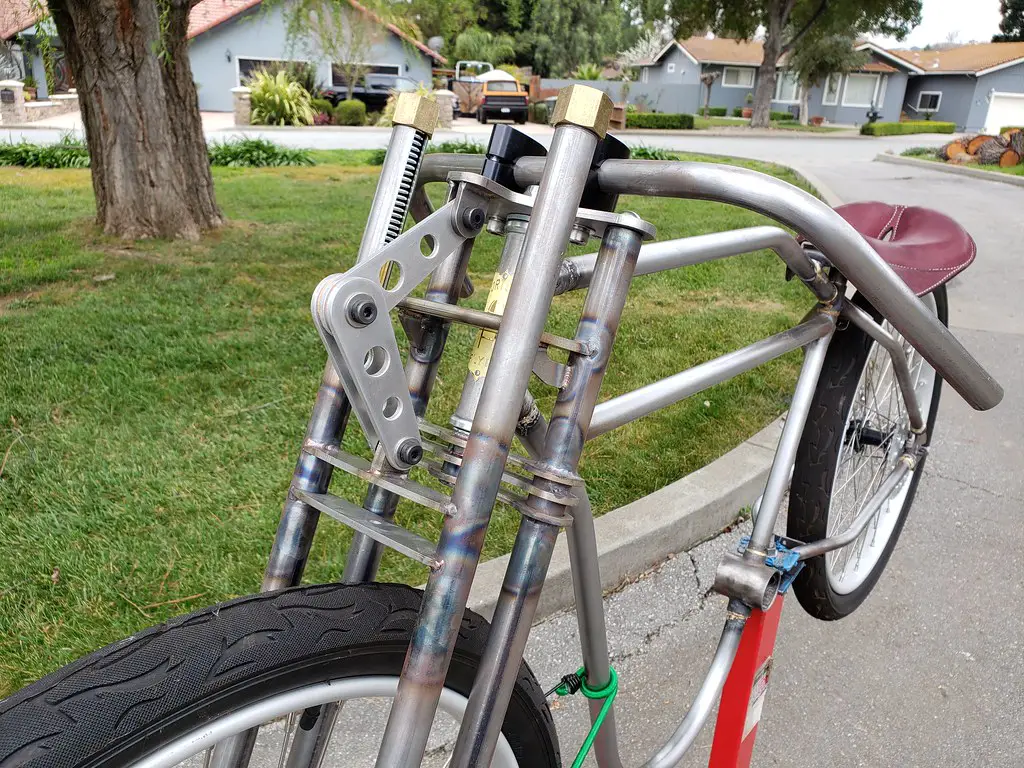"Rollin, rollin, rollin...."
Hmmm, I'm betting maybe the fork isn't short. Possibly just the camera angle - and perspective being exacerbated by that longer temporary stem.
Pete the last photos I posted are at a better angle for you and Pat to consider. That goose neck stem is really distracting and I'd have been better off not mounting the bars, till I could do it right.
My take is; the fork is actually short. Both you guys brought up good insights into what this means in the real world of riding and much goes back to application, type of riding, and feel. My use of the un sprung truss/girder style is as much for historic stylistic reasons as it is for function. I found it works well on another build & it's simple.
I checked the axle trail & found 1.5" positive trail on the Sportsman frame. now I'd allow .25" plus or minus on my trail number, but either way it's in the area I want for general riding. Pat's comment on short track forks running vertical is spot on, I'd add to that some run slightly negative trail metrics, for quick handling and track feel. My comments represent typical setup in the last century, lol. These bikes were fairly short wheel base machines running at comparatively slower speeds and radical riding attitude. High speed bikes tend to have longer wheel base and more positive axle trail & slightly more aggressive rake. A lot of factors enter into this other than the simple rake/head angle, and trail numbers.
Fenders I like on others bikes, but I don't build with fenders. The truss fork has 7/8" tire clearance and that's not enough for a fender, unless the drops are extended and that would radically change steering geometry. I did this when converting a truss fork to leaf spring for my Simplex, both wheel base and axle trail were extended and for my purpose it worked out, but I'd not want to alter the drops on my current build.
Early board track racers weren't as short in wheelbase as many photos suggest, and they didn't seem to follow a strict WB guideline. They probably just searched for that sweet spot. I measured the Sportsman wheelbase at 51" with axle forward and 52.5" adjusted mid drop seems about right & that surprised me with this fork. My Simplex is stretched to 53" as is my extended hybrid...the HD Peashooter is at 50". So this one is about where I've had good luck with other builds, though trail on each is different. The Simplex is 2.5" positive trail and is super stable, but not quick. Both the other two less than 2" trail. Handling is a fine line. ..a tight rope really. A small adjustment results in radical handling characteristic.
The controller, behind the seat tube will be mounted as high as possible to allow chain clearances on both pedal and motor drive sides.
3.5" clearance is really low.
Rick C.


 Deep Dish
Deep Dish Deep Dish
Deep Dish